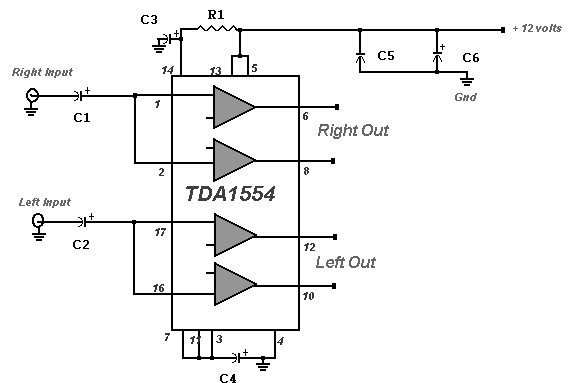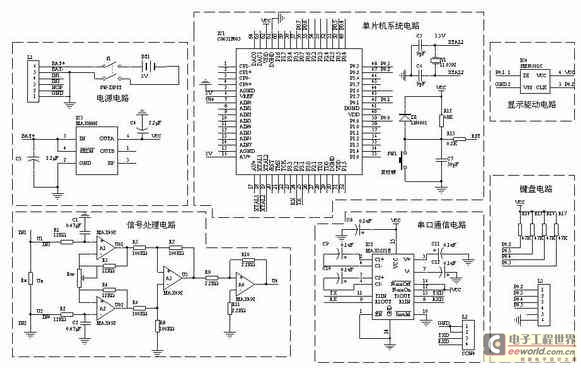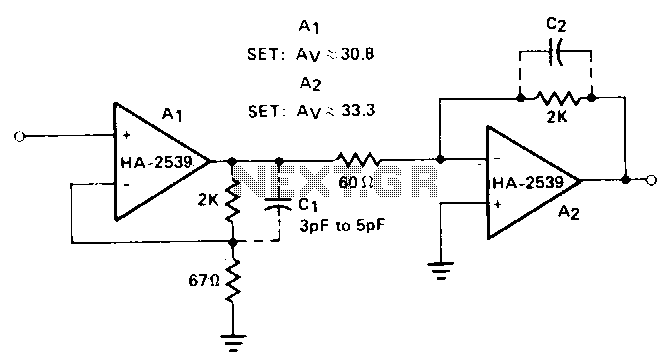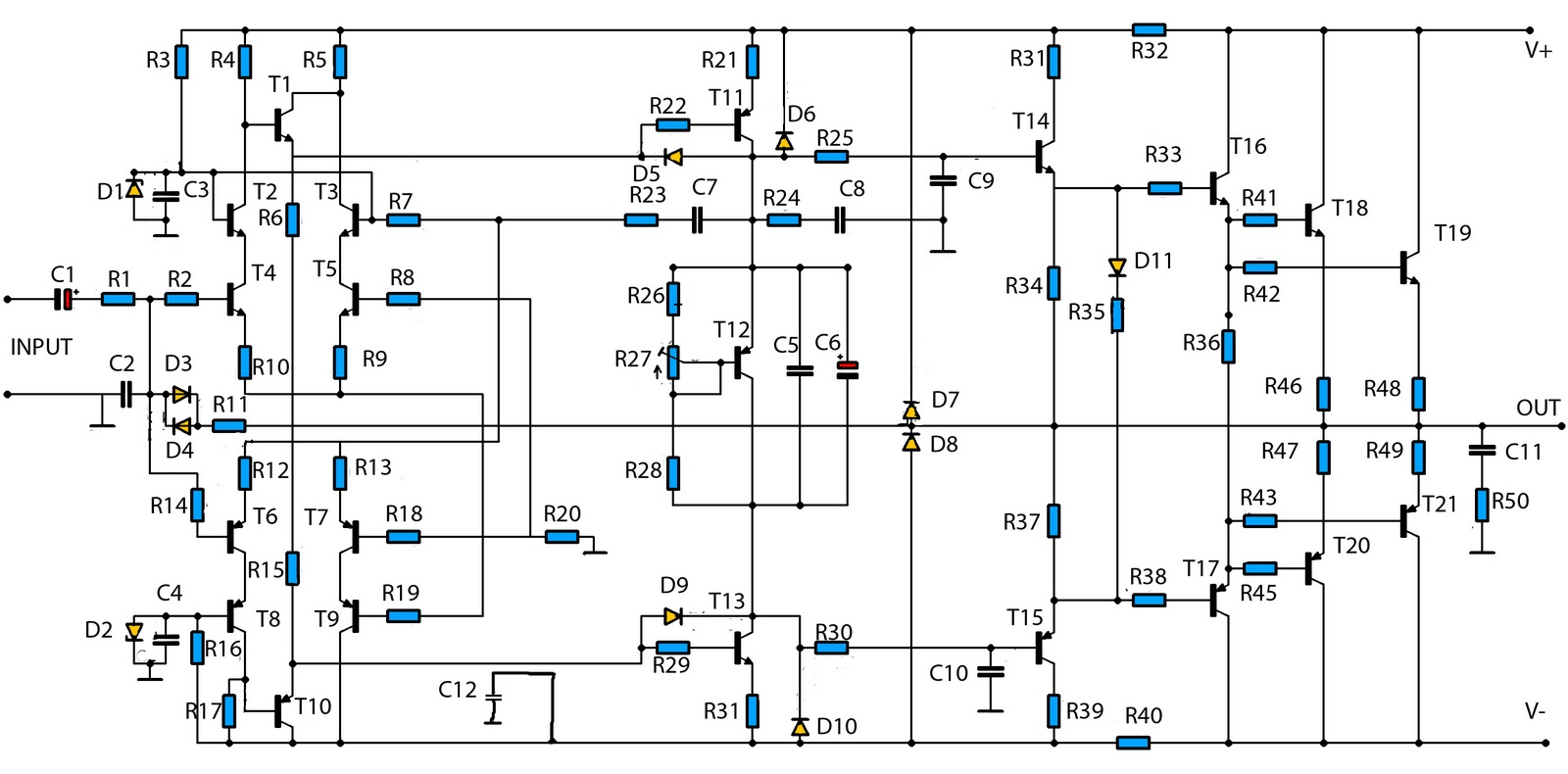
DIY TDA2050 Hi-Fi Chip Amplifier (chipamp)
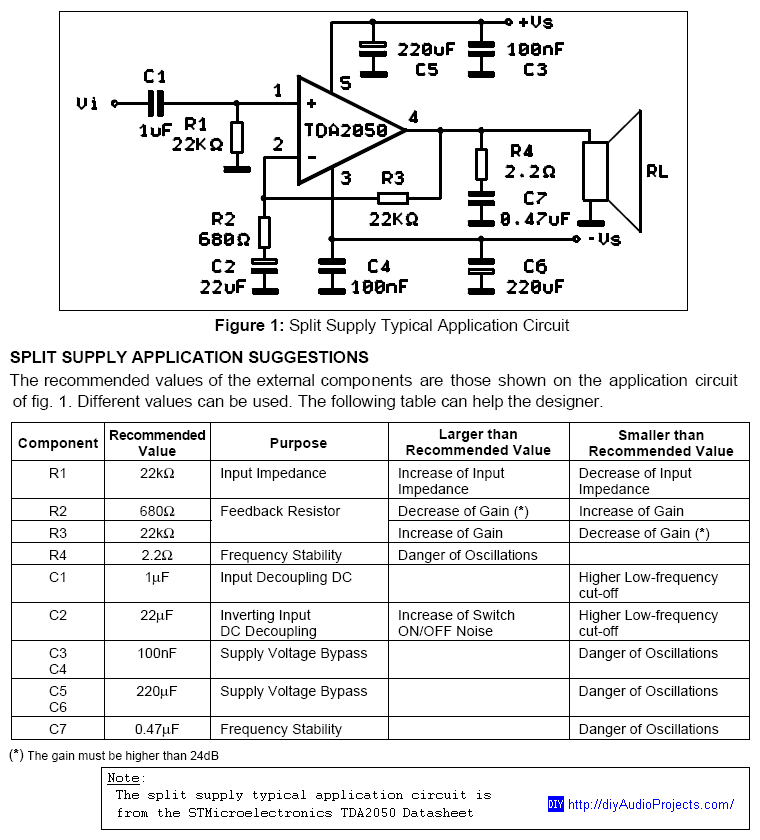
DIY TDA2050 Non-Inverting Chip Amplifier project constructed on a protoboard.
The TDA2050 is a popular audio power amplifier integrated circuit designed for various audio applications. This non-inverting amplifier configuration is particularly valued for its simplicity and effectiveness in delivering high-quality sound amplification. The project utilizes a protoboard for easy assembly and testing, allowing for modifications and adjustments as needed.
The circuit typically consists of the TDA2050 IC, which can deliver up to 14W of output power into an 8-ohm load with a total harmonic distortion of less than 0.1%. The essential components include the power supply, capacitors, resistors, and connectors for input and output signals.
To construct the circuit, the following steps should be followed:
1. **Power Supply**: The TDA2050 requires a dual power supply, typically ±14V to ±20V. Ensure that the power supply is regulated to prevent voltage spikes that could damage the IC.
2. **Input Stage**: Connect the input signal to the non-inverting pin of the TDA2050. A capacitor (typically 1µF) should be used to block any DC offset from the input source.
3. **Feedback Network**: A resistor divider network is used for setting the gain of the amplifier. The gain can be calculated using the formula: Gain = 1 + (R2/R1), where R1 is connected between the output and the inverting input, and R2 is connected from the inverting input to ground.
4. **Output Stage**: The output is taken from the speaker output pin of the TDA2050. It is essential to include a capacitor (typically 220µF) in series with the speaker to block DC and allow only the amplified AC signal to pass through.
5. **Decoupling Capacitors**: Place decoupling capacitors (typically 100nF) close to the power supply pins of the TDA2050 to filter out high-frequency noise and stabilize the voltage supply.
6. **Thermal Management**: The TDA2050 can generate heat during operation, so it is advisable to use a heat sink to dissipate heat effectively and ensure reliable operation.
7. **Testing**: After assembling the circuit, it is crucial to test the amplifier with a suitable audio source and load. Monitor the output for distortion and ensure that the amplifier operates within the specified parameters.
This DIY project provides an excellent opportunity to learn about audio amplification and circuit design while yielding a functional audio amplifier suitable for various applications, such as driving speakers in home audio systems or for experimental setups.DIY TDA2050 Non-Inverting Chip Amplifier (chipamp) Project constructed on a protoboard 🔗 External reference
The TDA2050 is a popular audio power amplifier integrated circuit designed for various audio applications. This non-inverting amplifier configuration is particularly valued for its simplicity and effectiveness in delivering high-quality sound amplification. The project utilizes a protoboard for easy assembly and testing, allowing for modifications and adjustments as needed.
The circuit typically consists of the TDA2050 IC, which can deliver up to 14W of output power into an 8-ohm load with a total harmonic distortion of less than 0.1%. The essential components include the power supply, capacitors, resistors, and connectors for input and output signals.
To construct the circuit, the following steps should be followed:
1. **Power Supply**: The TDA2050 requires a dual power supply, typically ±14V to ±20V. Ensure that the power supply is regulated to prevent voltage spikes that could damage the IC.
2. **Input Stage**: Connect the input signal to the non-inverting pin of the TDA2050. A capacitor (typically 1µF) should be used to block any DC offset from the input source.
3. **Feedback Network**: A resistor divider network is used for setting the gain of the amplifier. The gain can be calculated using the formula: Gain = 1 + (R2/R1), where R1 is connected between the output and the inverting input, and R2 is connected from the inverting input to ground.
4. **Output Stage**: The output is taken from the speaker output pin of the TDA2050. It is essential to include a capacitor (typically 220µF) in series with the speaker to block DC and allow only the amplified AC signal to pass through.
5. **Decoupling Capacitors**: Place decoupling capacitors (typically 100nF) close to the power supply pins of the TDA2050 to filter out high-frequency noise and stabilize the voltage supply.
6. **Thermal Management**: The TDA2050 can generate heat during operation, so it is advisable to use a heat sink to dissipate heat effectively and ensure reliable operation.
7. **Testing**: After assembling the circuit, it is crucial to test the amplifier with a suitable audio source and load. Monitor the output for distortion and ensure that the amplifier operates within the specified parameters.
This DIY project provides an excellent opportunity to learn about audio amplification and circuit design while yielding a functional audio amplifier suitable for various applications, such as driving speakers in home audio systems or for experimental setups.DIY TDA2050 Non-Inverting Chip Amplifier (chipamp) Project constructed on a protoboard 🔗 External reference

